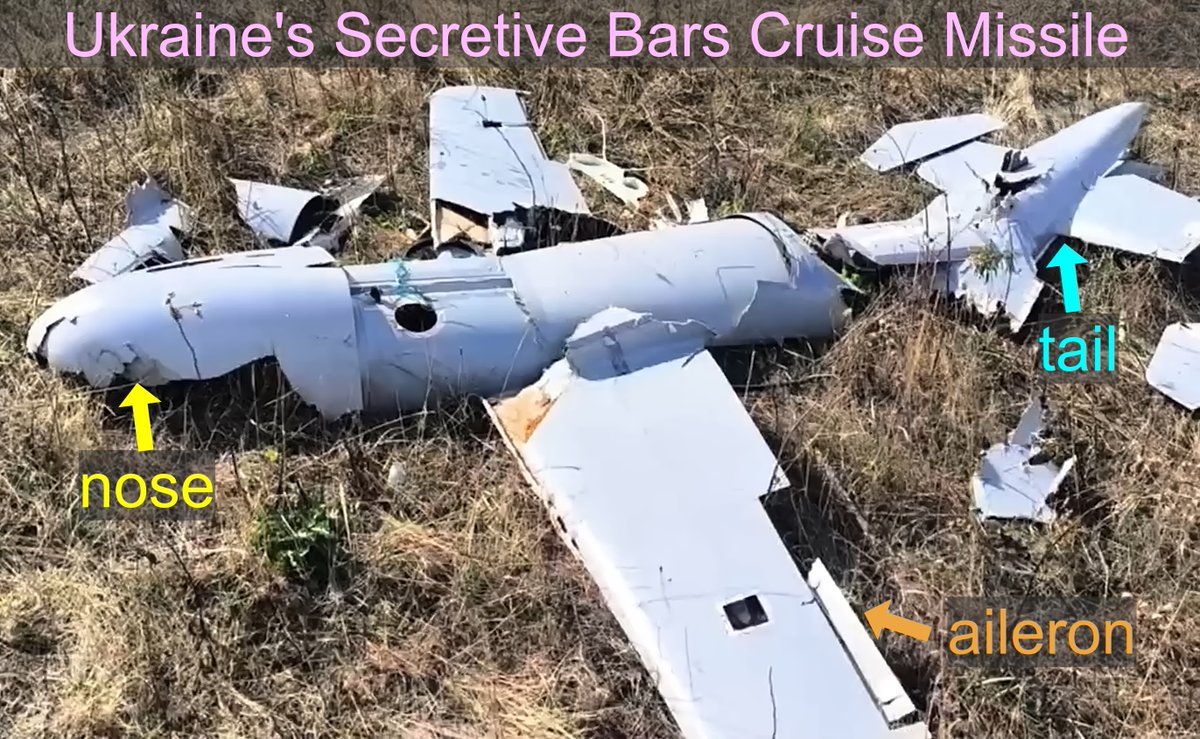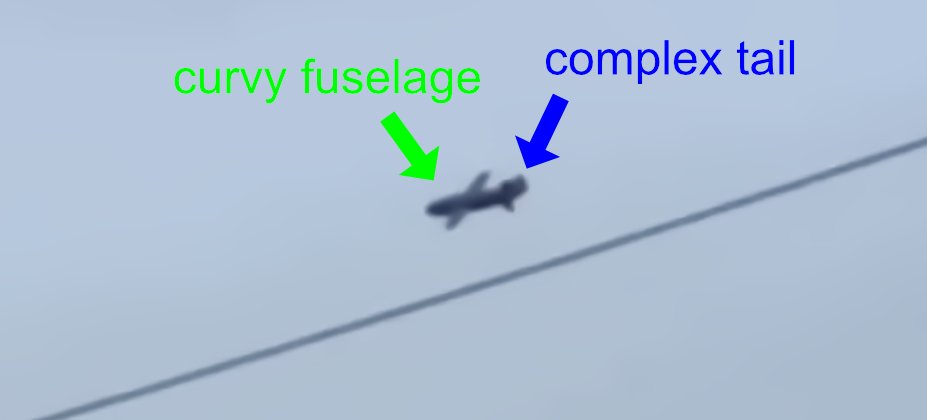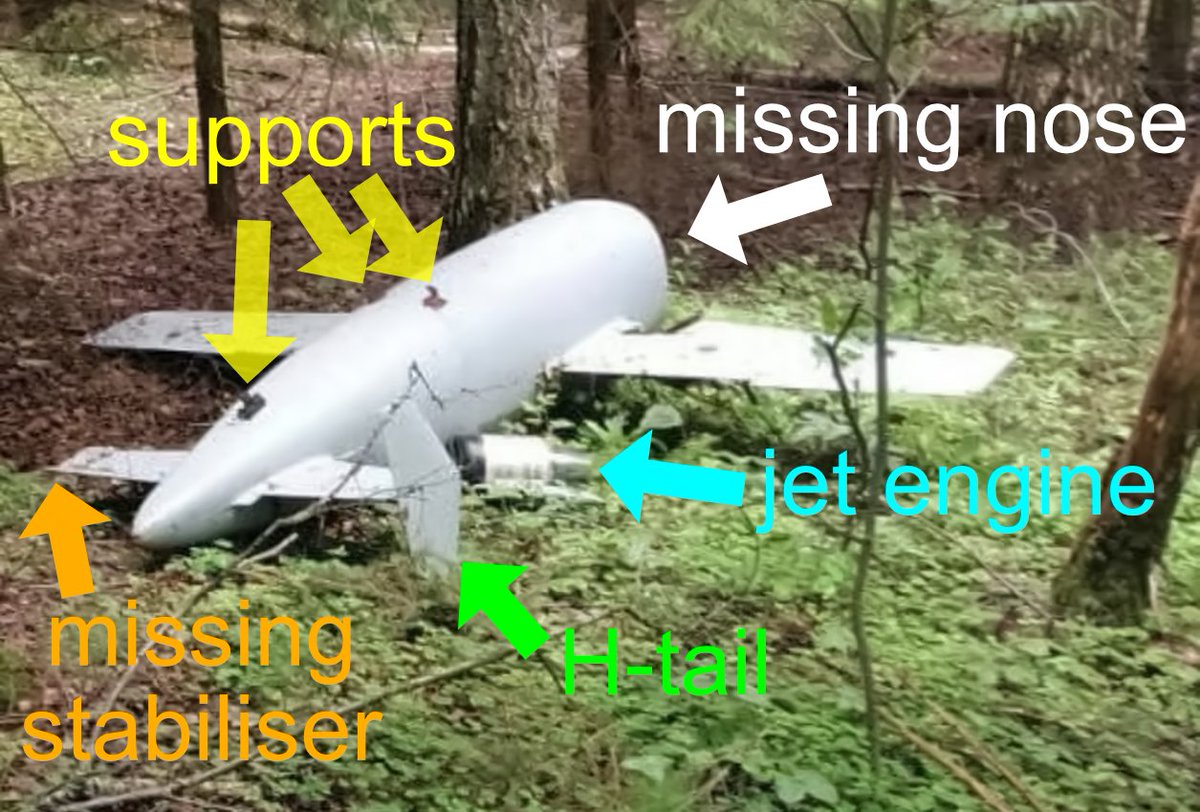1. A mysterious #Ukrainian #drone is striking targets deep inside russia. This drone is causing lots of problems for the russians but what is it? 

2. After one deep strike, a russian Telegram channel showed a photo of 6 drone engines and incorrectly claimed they were from Ukrainian Liutyi (Fierce) #drones. These engines are much too small for a Liutyi. The true story is more interesting.
t.me/genshtab24/602…

t.me/genshtab24/602…

3. For reference, the Liutyi is a fairly large drone that is easily identifiable by its fixed landing gear, twin-boom fuselage and V-tail. Its engine, a Hirth model F23, produces 50 HP and is much larger than the engines shown above.
pravda.com.ua/eng/articles/2…

pravda.com.ua/eng/articles/2…

4. A closer look at the engines reveals a large rectangular mounting plate. Broken props indicate the engines were running during the crash. Heavy damage is likely a result of explosions. 

5. These engines are Chinese-made DLE 120. They weigh 2.9 kg and make 12 HP. These engines are smaller than ones used in other drones such as the Beaver, AQ-400 and Mugin-5. 

6. A pile of airframe parts was also shown from an attack on russia’s Mozdok airfield. These parts are not from a Liutyi. However, the carbon fiber tail boom and sweptback tail fin are very familiar. These belong to a somewhat mysterious drone.
t.me/rybar_in_engli…

t.me/rybar_in_engli…

7. Plenty of these drones have crashed in russia. This example was stripped of components but gives a good view of the airframe. It has several distinctive features that make it easy to identify even in flight.
t.me/bpla_inform/219

t.me/bpla_inform/219

8. Each boom is two nested carbon tubes with locking buttons that enable the entire tail to be easily removed. The 5 white patches are access panels. Interestingly, these panels were obviously reinstalled for these photographs. 

9. The airframe is very nicely designed, and is made using a honeycomb composite. All panels are flush-mount with captive fasteners. Fuel tank looks like a bladder. There are plywood bulkheads and two battery compartments. 

10. A hobby-grade flight controller by Matek Systems (H743-Wing V3), is the brain. Although capable this controller could easily be swapped for something more advanced. Loop-back connectors are in series with batteries, and act as a power switch. The engine mount is nicely made. 

11. Here the 3D-printed cover is removed showing a damaged GPS antenna. It is a somewhat unusual active antenna by Taoglas, model XAHP.50. There are no obvious cameras or other antennas on this drone. It is likely completely autonomous. 

12. A supply by PowerBox Systems EVO is used to power large servos from 2 batteries (1 battery per loop-back connector in #10). Most wires have a protective braided sleeve. Plywood bulkheads are glued in place but are not coated, e.g., with epoxy. 

13. Although this drone has only a 12 HP engine, it has excellent performance. It is fast and can carry 20 kg of munitions at least 300 km. Small and fast makes it hard to shoot down. It has caused a lot of trouble for russians by striking deep into russia.
14. What is this drone’s name? Various sources have incorrectly identified it as a Chaklun (Sorcerer). However, the Chaklun is a small reconnaissance drone that has been in service since the start of the war.
chaklun.in.ua

chaklun.in.ua

15. A prototype of the mystery drone appeared alongside Chaklun drones in November 2022. The two prototypes used smaller American-made Desert Aircraft DA-100L engines. They also had different wing tips, larger tail fins, different access panels and (of course) landing gear. 

16. This drone was recently displayed at Drone Day 2024 in Lithuania. It was at the booth of the Lithuania company, NT Service who make the SkyWiper EDM4S anti-drone gun. The Prime Minister and Defense Minister were also there.
kam.lt/dronu-dienoje-…

kam.lt/dronu-dienoje-…

17. Also shown was a Lancet analogue with the same honeycomb construction & colour. These 2 drones are likely made by the same company. News sources say the Lancet analogue is Lithuanian and is being tested in Ukraine. The mystery drone may be Lithuanian.
focus.ua/uk/digital/648…

focus.ua/uk/digital/648…

18. A recent article citing Budanov reported Ukrainian Dragon and Splash drones attacked Morosovsk Airfield in russia. I cannot find anything on “Dragon” & “Splash”. Thus, the mystery drone is likely named either “Dragon” or “Splash”.
twz.com/air/ukraine-st…

twz.com/air/ukraine-st…

19. In summary, the mysterious drone might be Lithuanian. It might be called Dragon or Splash. The Lithuanian company NT Service could somehow be involved. Regardless, the drone appears to be very effective at causing trouble deep inside russia.
20. If you enjoyed this thread, please repost as a quote. Respectful comments are welcome. Also please read my previous threads listed under “Highlights”. 

Some folks have trouble seeing #19.
(If you don't see #19 it says, "In summary, the mysterious drone might be Lithuanian. It might be called Dragon or Splash. The Lithuanian company NT Service could somehow be involved. Regardless, the drone appears to be very effective at causing trouble deep inside russia.")
21. (ps) Lithuania’s Prime Minister and its Minister of National Defence both gave speeches with the mystery drone behind them. This was not an accident. Instead it was likely intended to send a not-so-subtle message to russia. 

• • •
Missing some Tweet in this thread? You can try to
force a refresh






















